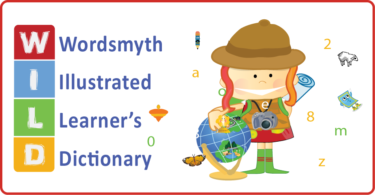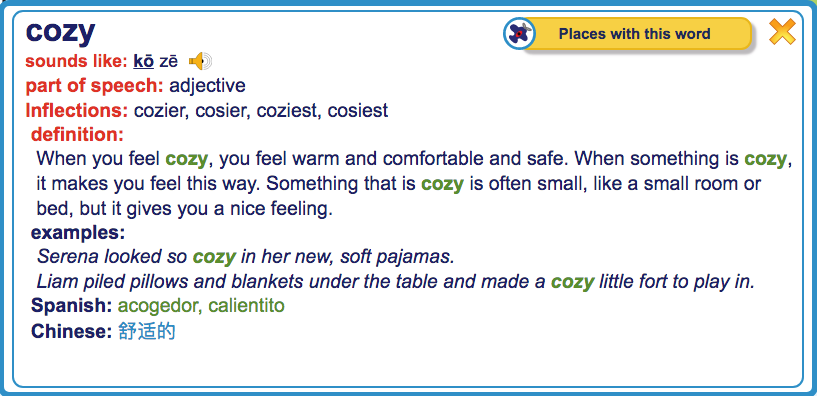Definitions for the Wordsmyth Illustrated Learner’s Dictionary (WILD) are written in what is called a “descriptive,” or “explanatory,” style. This type of defining uses full sentences as opposed to the sentence fragments traditionally used in dictionaries and is a style that is well-suited to the needs of young readers and language learners.

Because many of the words in WILD are nouns, a large proportion of the definitions are simply of the form “An A is a B”—“A garden is a place where people grow flowers, fruits, or vegetables,” for example. However, many of the definitions in WILD are written in a format that is unique to descriptive defining; that is, they define by using the headword in an initial clause beginning with “If” or “When” (e.g., “When you gather things…) and describing in the clause that follows the communicative impact of using that word (“….you bring them together into one place.”)
Defining “cozy” and “growl”
To define the word “cozy,” for example, we begin with the clause “When you feel cozy” and finish with the defining information: “you feel warm and comfortable and safe.” Similarly, to define the verb “growl,” we begin with the clause “When an animal growls” and end with the defining information: “it makes a sound that comes from deep in its throat.”


Less is not always more in dictionary writing for kids
In defining words for young children in WILD, we have taken an attitude that does not generally characterize dictionary writing. While lexicographers typically aim for conciseness in defining, we don’t operate under the assumption in WILD that less is always more. In fact, we’ve taken the attitude that more is more, as long as what is contained in the definition field is simple and useful. We believe that even full-sentence, descriptive definitions can still be remarkably opaque and incomplete in describing meaning, and we want our users to understand the meaning of the headword described and even enjoy the experience of grasping it through reading. To this end, we very often go beyond the core defining sentence and add more information that we hope will make the meaning clear and make the experience of reading the definition both enlightening and entertaining. For “cozy,” for example, we give a sense of what kinds of things make us feel cozy. For “growl,” we explain why an animal might growl. This kind of information is often what truly brings the meaning of a word home for the reader.
